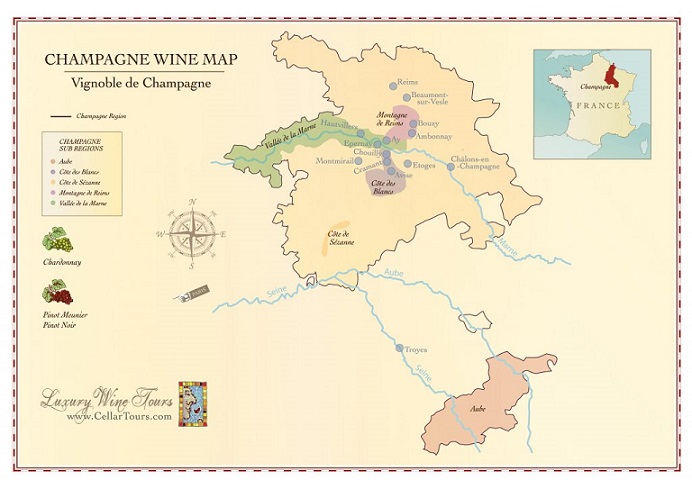Thrilling Wine from One of Champagne's OG Biodynamic Producers
There are plenty of Champagne geeks in the world and plenty of natural wine geeks but they don’t always get excited about the same wines. Recently Gary put a wine in front of me that fits both bills—the 2011 Fleury Sonate Extra Brut Champagne Sans Soufre, made by one of the OG biodynamic producers in Champagne. Domaine Fleury has been farming their chalk and clay soils biodynamically since 1989, well before this was a buzz word on every hipster wine list. All of their 15 hectares are cultivated biodynamically, certified by Ecocert, Demeter, and Biodyvin. Winemaker & third generation, Jean-Sébastien Fleury, uses minimal sulfites and interventions in the cellar.
Plus, this wine is fascinating to drink—intriguingly unique, but totally clean and fresh. Layers of nutty notes and a delicate creamy expression, with a broad, complex palate. You get a sense of almonds and a touch of bitterness, like a walnut skin, but there’s still ripe golden fruit. It opens with air and picks up a touch of sous voile characteristic, like a bright, bubbly cousin to vin jaune from Jura. It’s a beautiful goldenrod color in the class with lifted acid and a lithe prettiness. There’s a lot going on here, and it’s exciting to drink.
Only about 1.5% of vineyards in Champagne are currently farmed biodynamically, according to Forbes (in January of 2019). But perhaps that is changing. Over the years, I’ve seen more and more Champagne producers focused on individual terroir instead of or in addition to blends, and there’s more organic and biodynamic farming in the region—even a big house like Roederer farms half of its estate biodynamically. There seems to be real excitement toward this more Burgundian approach from smaller producers, many of whom are in the Aube, neighbors to Burgundy—e.g., Cedric Bouchard, Bertrand Gautherot, and, of course, Jean-Sebastian Fleury.
Map generously provided by Cellar Tours.
The Aube is lush and rural with forests and farms alongside vineyards. Located much closer to Chablis than to Reims—and even sharing the same Kimmeridgian soil—it physically and philosophically straddles the border between these two great regions, and Aube’s sensibility seems aligned with the geography. Wine Folly, who calls it the “hottest Champagne region right now,” says, “The 21st century saw a few risk takers starting to make their own wines and push towards a culture of artisanal, experimental, terroir-driven Champagne in the Côte des Bar.” It’s exciting to see this sort of regional introspection produce new possibilities for the wines of Champagne. And they exist as a great counterpart to the classic northern Champagne wines that we all adore. If Fleury is any indication, there are many exciting things to come from the south!
- Kate Soto



